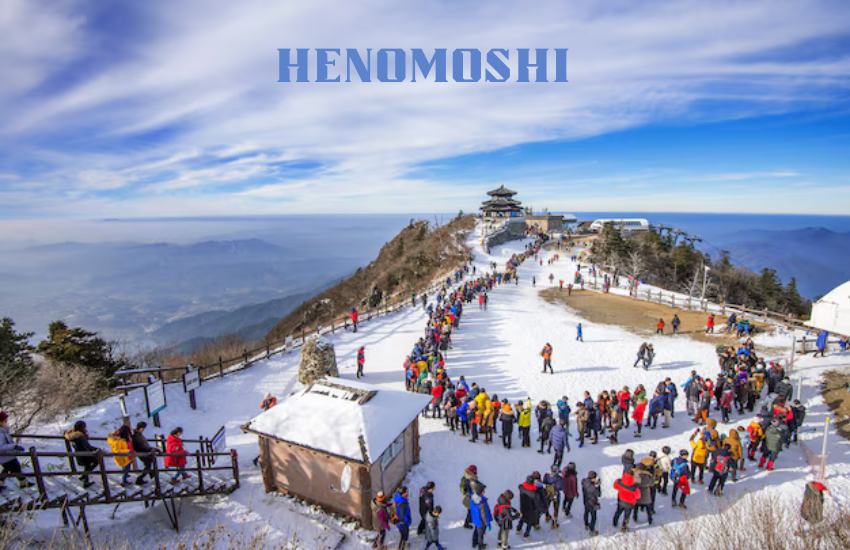The history of the henomoshi is a fascinating tapestry woven from the threads of ancient cultures, pivotal innovations, and enduring traditions. This article explores its origins, cultural significance, evolution, and future, offering readers a comprehensive understanding of this important subject.
Introduction
The word “Henomoshi” might not immediately ring a bell, but its historical and cultural depth ensures its place in human heritage. From its ancient beginnings to its role in modern society, Henomoshi serves as a testament to humanity’s ability to adapt, innovate, and preserve its roots. But what is Henomoshi, and why is it so significant?
This article traces the Henomoshi’s journey through time, examining its etymology, origins, and evolution while shedding light on the challenges and triumphs it faced along the way.
The Etymology of Henomoshi
Etymologically, the term “Henomoshi” stems from a combination of ancient linguistic roots that vary by region. Scholars suggest it may have originated from a proto-language spoken thousands of years ago, with its syllables denoting abstract concepts like unity, progress, or cultural identity.
In historical texts, Henomoshi appears under different names depending on the era and region. Its transformation over centuries reflects how languages evolve and how words adapt to changing contexts.
Origins of Henomoshi
Henomoshi’s roots trace back to ancient civilizations, where it held practical and symbolic roles. Archaeological findings reveal Henomoshi’s presence in early agrarian societies, where it played a role in communal living and economic exchanges.
The oldest known references to Henomoshi appear in inscriptions dating back to 2000 BCE, hinting at its integration into daily life and spiritual practices. These discoveries suggest that Henomoshi was more than a functional object or concept; it was a cultural cornerstone.
Henomoshi in Ancient Society
In ancient times, Henomoshi was revered for its multifaceted role. Whether it served as a tool for governance, a symbol of religious devotion, or a means of trade, Henomoshi’s influence was far-reaching.
Ancient texts from Mesopotamia, Egypt, and the Indus Valley Civilization describe Henomoshi in contexts ranging from ritual ceremonies to economic systems. For instance, Henomoshi-related symbols often adorned artifacts like pottery, textiles, and seals, indicating its widespread adoption.
Transformation During the Middle Ages
The medieval period marked a turning point for Henomoshi as it adapted to shifting political and economic landscapes. With the rise of empires and trade networks, Henomshi became a medium for cultural exchange.
Notable developments during this era include its use in manuscripts, architectural designs, and diplomatic gifts. Historical records show how Henomshi bridged gaps between distant civilizations, fostering mutual understanding and collaboration.

Renaissance and Henomshi
The Renaissance breathed new life into Henomshi traditions, merging ancient wisdom with contemporary creativity. Artists, scientists, and philosophers of the era drew inspiration from Henomoshi, embedding it into their works and discoveries.
For instance, Renaissance art often featured Henomshi motifs, reflecting society’s reverence for its historical significance. Similarly, scholars utilized Henomoshi concepts to advance their studies in mathematics, astronomy, and medicine.
Global Spread of Henmoshi
As global exploration surged during the 15th and 16th centuries, Henomoshi found its way into new territories. European travelers and traders introduced Henomoshi to Asia, Africa, and the Americas, where it integrated with local traditions and beliefs.
This exchange led to the creation of regional variations, each embodying unique cultural attributes. Today, Henomoshi’s global presence highlights humanity’s interconnectedness and shared heritage.
Modernization of Henmoshi
The Industrial Revolution marked another transformative phase for Henomshi. Advances in technology and mass production enabled its widespread use, while shifting societal norms influenced its applications and meanings.
During this period, Henomoshi transitioned from a primarily symbolic artifact to a practical tool in industries like manufacturing, agriculture, and education.
Henomshi in the 20th Century
The 20th century saw unprecedented changes in how Henomoshi was perceived and utilized. Key historical events, such as the World Wars and the Space Race, underscored its importance in science, technology, and diplomacy.
Pioneers in various fields embraced Henomshi, driving innovations that shaped modern society. Its inclusion in pop culture further cemented its status as a cultural icon.
Henomshi and Modern Technology
In the digital age, Henomshi has found new relevance. Its integration with modern technologies has revolutionized industries ranging from healthcare to artificial intelligence.
For example, researchers have developed applications inspired by Henmoshi principles to solve contemporary challenges, such as sustainability and data analytics. This evolution demonstrates Henomoshi’s adaptability and enduring significance.
Cultural Significance Today
Henomshi remains a symbol of unity, resilience, and creativity in many cultures. Festivals, art forms, and rituals worldwide celebrate its legacy, emphasizing the need to preserve its traditions.
In regions where Henomshi originated, dedicated communities continue to pass down their knowledge, ensuring that its essence endures for generations.
Famous Figures Associated with Henomoshi
Over the centuries, numerous individuals have contributed to Henomohi’s history. From visionary leaders and artisans to modern innovators, these figures have played pivotal roles in shaping its story.
Their achievements not only highlight Henomoshi’s impact but also inspire future generations to appreciate its value.
Challenges to Henmoshi
Despite its rich heritage, Henomshi faces challenges in the modern era. Globalization, urbanization, and changing lifestyles threaten its preservation, while misinformation obscures its true history.
Addressing these challenges requires collective effort, including education, advocacy, and sustainable practices.
Revival and Preservation Efforts
Fortunately, initiatives worldwide aim to revive and sustain Henomoshi-related practices. Museums, cultural organizations, and grassroots movements work tirelessly to protect its legacy.
These efforts emphasize the importance of Henomoshi as a cultural and historical asset, fostering appreciation among diverse audiences.

Future of Henomshi
Looking ahead, Henomshi’s potential remains limitless. As societies continue to evolve, Henomoshi will undoubtedly find new applications and meanings, reaffirming its relevance in the modern world.
Educators, innovators, and artists will play crucial roles in ensuring that Henomoshi remains a source of inspiration and knowledge.
FAQs About Henomoshi
1. What is Henomoshi?
Henomoshi is a concept or object of historical and cultural significance, rooted in ancient traditions and adapted over time.
2. Where did Henomshi originate?
Henooshi traces its origins to ancient civilizations, with early records found in Mesopotamia, Egypt, and the Indus Valley.
3. How has Henmoshi evolved?
Henomshi has evolved from a symbolic artifact to a practical tool, influenced by technological advancements and societal changes.
4. Why is Henomoshi significant today?
Henomshi symbolizes cultural heritage, innovation, and resilience, serving as a link between the past and future.
5. What challenges does Henomshi face?
Preservation challenges include globalization, misinformation, and changing societal values.
6. How can we preserve Henooshi traditions?
Supporting cultural initiatives, educating future generations, and promoting sustainable practices can help preserve Henomoshi’s legacy.
Conclusion
The history of the Henomoshi is a testament to humanity’s ingenuity, adaptability, and cultural richness. From ancient rituals to modern innovations, Henomoshi continues to inspire and unite people across the globe. Its story is not just a reflection of the past but a guide to understanding our collective future.

